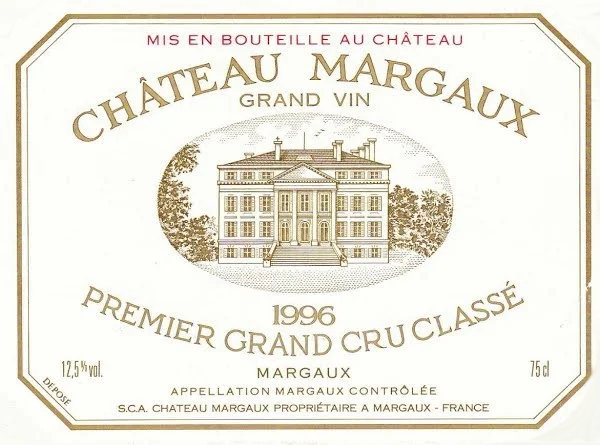Château Margaux 1997
Review of the Estate
Château Margaux is known for producing some of the silkiest, most aromatic wines in Bordeaux and it has been famous for doing so for centuries. The origins of the estate may be traced back to the 15th century when the Lestonnac family took over a grain growing property known as Lamothe (deriving from la motte - meaning a small rise in the land, or hill). The agricultural change from cereal crops to vines was led by Pierre de Lestonnac from 1572 to 1582. Further developments occurred when, over a century later, Chateau Margaux estate manager, Monsieur Berlon, saw the benefits of vinifying red and white grapes separately. This change was what set Chateau Margaux firmly on the path to modern vinification practices and international renown.
This reputation spread over the next several hundred years. Sir Robert Walpole, the English Prime Minister in the early 18th Century, declared himself an avid supporter of Chateau Margaux and was known to purchase four casks every three months! When the Marquis de la Colonilla purchased the estate in the early 19th century, the outstanding reputation of Chateua Margaux's wines demanded an impressive chateau to match. Built in 1810 by Louis Combes, the current chateau is a unique example of the neo-classical style. With its structured facade, balanced by ionic columns, it exudes a refined elegance not dissimilar to that of the wines produced within. Chateau Margaux was officially recognised as an historic monument in 1946.
Today Chateau Margaux is owned by Corinne Mentzelopoulos. Her father, Andrè, purchased the estate in 1977 and invested significantly in the regeneration of the vineyard and winery by installing new drainage systems, replanting vines, creating a new underground cellar and investing in new oak barrels. The result of these improvements is evident in the spectacular and consistent vintages produced by Chateau Margaux since the 1978 vintage. This has allowed Chateau Margaux to remain a dominant force in a highly competitive market and maintain its preeminent global reputation.

Vineyard
Surface area: 192.7 acres
Grape Varieties: 75% Cabernet Sauvignon, 20% Merlot, 5% Cabernet Franc and Petit Verdot
Average age of vines: 35 years
Density of plantation: 10,00 vines per hectare
Average yields: 45 hectoliters per hectare
Average cases produced: 16,500 per year
Plateau of maturity: 9 - 35 years
Château Margaux 1997 Reviews / Tasting Notes
Robert Parker - The Wine Advocate
Point Score: 90
Undoubtedly a success for the vintage, this immensely charming, dark ruby/purple-colored wine exhibits floral, black currant, and smoky, toasty oak aromas. There is admirable richness, excellent ripeness, not a great deal of density, or superb concentration, but plenty of finesse, suppleness, and character. It can be drunk young, or cellared for 12-15 years.
Wine Spectator
Point Score: 90
All in finesse, with berry, currant and light vanilla character. Medium- to full-bodied, with silky tannins and a fresh finish. Lovely, long finish. Gorgeous core of fruit in this wine. Drink now through 2004.
Stephen Tanzer - Vinous
Point Score: 90-93
Dark red-ruby color. Floral, pure aromas of dark berries. Penetrating and sweet, with precise, intense berry flavors and firm underlying backbone. Here the fruit has real sweetness and depth. Finishes with very fine, ripe tannins and lingering berry flavor. Classy and suave.